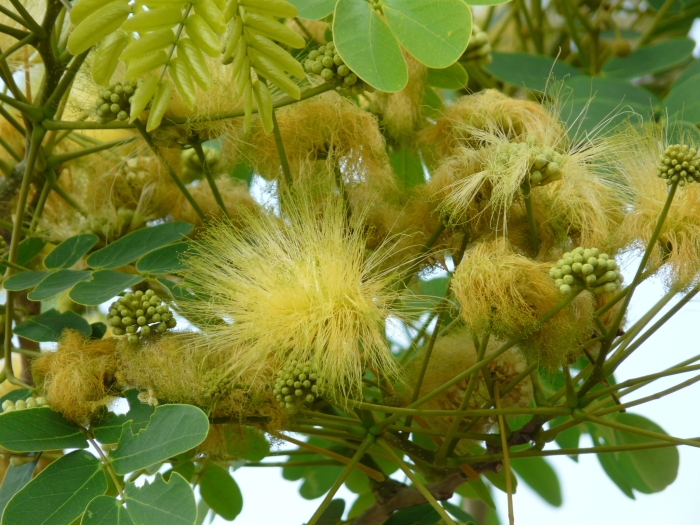Siris Tree
(Albizia lebbeck)
Siris Tree (Albizia lebbeck)
/
/

© Dinesh Valke
CC BY-SA 4.0
Image By:
© Dinesh Valke
Recorded By:
Copyright:
CC BY-SA 4.0
Copyright Notice:
Photo by: © Dinesh Valke | License Type: CC BY-SA 4.0 | License URL: http://creativecommons.org/licenses/by-sa/4.0/ | Uploader: dineshvalke | Publisher: iNaturalist |




















Estimated Native Range
Summary
Albizia lebbeck, commonly known as Siris Tree, Indian Siris, or East Indian Walnut, is a deciduous tree native to dry deciduous forests and moist deciduous forests, as well as along riverbanks and in coastal areas of the Indian subcontinent and Myanmar. It can grow to a height of 59-98 feet with a trunk diameter of up to 3 feet. The tree is characterized by its large, spreading canopy, bipinnate leaves, and fragrant, creamy-white flowers with long, conspicuous stamens that bloom in dense clusters, primarily during the summer months. The flowers are followed by flat, linear seed pods that are 6-12 inches long, each containing 6-12 seeds.
The Siris Tree is valued for its shade and ornamental qualities, making it a popular choice for urban planting, avenue trees, and as a specimen tree in large gardens. It is also used for its timber and has medicinal properties. In cultivation, Albizia lebbeck prefers full sun to partial shade, tolerates a range of soil types provided they are well-drained, and requires moderate watering. While it is generally easy to maintain, it can be susceptible to frost and should be protected in cooler climates. The tree’s aggressive root system can cause problems if planted too close to buildings or pavements.CC BY-SA 4.0
The Siris Tree is valued for its shade and ornamental qualities, making it a popular choice for urban planting, avenue trees, and as a specimen tree in large gardens. It is also used for its timber and has medicinal properties. In cultivation, Albizia lebbeck prefers full sun to partial shade, tolerates a range of soil types provided they are well-drained, and requires moderate watering. While it is generally easy to maintain, it can be susceptible to frost and should be protected in cooler climates. The tree’s aggressive root system can cause problems if planted too close to buildings or pavements.CC BY-SA 4.0
Plant Description
- Plant Type: Tree
- Height: 30-50 feet
- Width: 30-50 feet
- Growth Rate: Moderate, Rapid
- Flower Color: White, Yellow
- Flowering Season: Spring, Summer
- Leaf Retention: Deciduous
Growth Requirements
- Sun: Full Sun
- Water: Medium
- Drainage: Fast, Medium, Slow
Common Uses
Bee Garden, Bird Garden, Low Maintenance
Natural Habitat
Native to dry deciduous forests, moist deciduous forests, riverbanks, and coastal areas
Other Names
Common Names: Lebbeck, Woman’s Tongue, East Indian-Walnut, Indian Siris, Acacia-Tree, Bois Noir Des Bas, Siris, Rain Tree
Scientific Names: , Albizia lebbeck, Acacia lebbeck, Acacia lebbek, Acacia seeressa, Acacia seeressa, Acacia sirissa, Acacia speciosa, Albizia latifolia, Albizia lebbeck subsp. leucoxylon
GBIF Accepted Name: